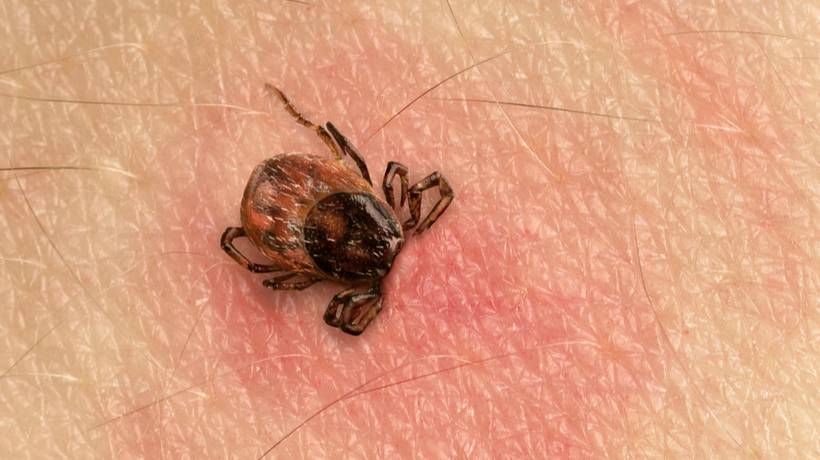Lyme disease is one of the most common tick-borne illnesses. It is transmitted through a tick bite of infected black-legged ticks, commonly known as ‘deer ticks.’
The infection is most commonly caused by the bacteria Borrelia burgdorferi; Very rarely, it is caused by the bacteria Borrelia mayonii.
You’re more likely to get Lyme disease if you live or spend a great amount of time in a heavily grassy or wooded area where ticks are more common.
Lyme Disease Symptoms:
The signs and symptoms of Lyme disease can vary depending on what stage it is in.
Early signs of Lyme disease include:
- A small, red bump, similar to a mosquito bite. It often appears after a few days and at the site of the tick bite. A red bump does not always indicate Lyme disease.
If the following symptoms occur within a month after you’ve been infected, it is more likely to be due to Lyme disease:
- Rash: 3-30 days after an infected tick bite, an expanding red area might appear. The rash will form a bulls-eye pattern. The rash itself is usually not painful or itchy but might feel warm. However, not everyone with Lyme disease develops a rash.
- Other symptoms: Fever, chills, fatigue, body aches, headache, neck stiffness and swollen lymph nodes.
If Lyme disease is left untreated, new symptoms might appear in the following week or months after the initial bite.
Later signs and symptoms include:
- Erythema migrans: The rash may spread to other parts of your body aside from the bite site.
- Joint pain: Severe joint pain and swelling will most likely affect your knees, but the pain can affect other joints.
- Neurological problems: Weeks, months or years after infection, you might develop inflammation of your brain, numbness or weakness in your limbs, temporary paralysis of one side of your face and impaired muscle movement.
Lyme Disease Prevention:
The best way to prevent Lyme disease is to avoid areas where deer ticks live, especially wooded, grassy areas. According to the Mayo Clinic, you can decrease your risk of getting Lyme disease by:
- Covering up: When in a wooded or grassy area, wear closed toe shoes, long pants and shirts, and a hat and gloves. Do your best to stick to the trails and avoid walking through bushes.
- Use insect repellents: Apply insect repellent with a 20% or higher concentration of DEET to your skin.
- Try and tick-proof your yard: Clear brush and leaves, mow your lawn regularly and stack wood in a neat pile in dry and sunny areas.
- Check your clothing, yourself, your children and your pets for ticks: Be vigilant after spending time in an area where ticks are common. Deer ticks are small, so search carefully.
- Remove ticks as soon as possible with tweezers: If you do see a tick attached to you, gently grasp it by the head or mouth. Don’t squeeze or crush the tick, but do pull carefully. Once the tick is removed, dispose of it and apply antiseptic to the bite area.
For more information on Lyme disease visit www.MayoClinic.com.



